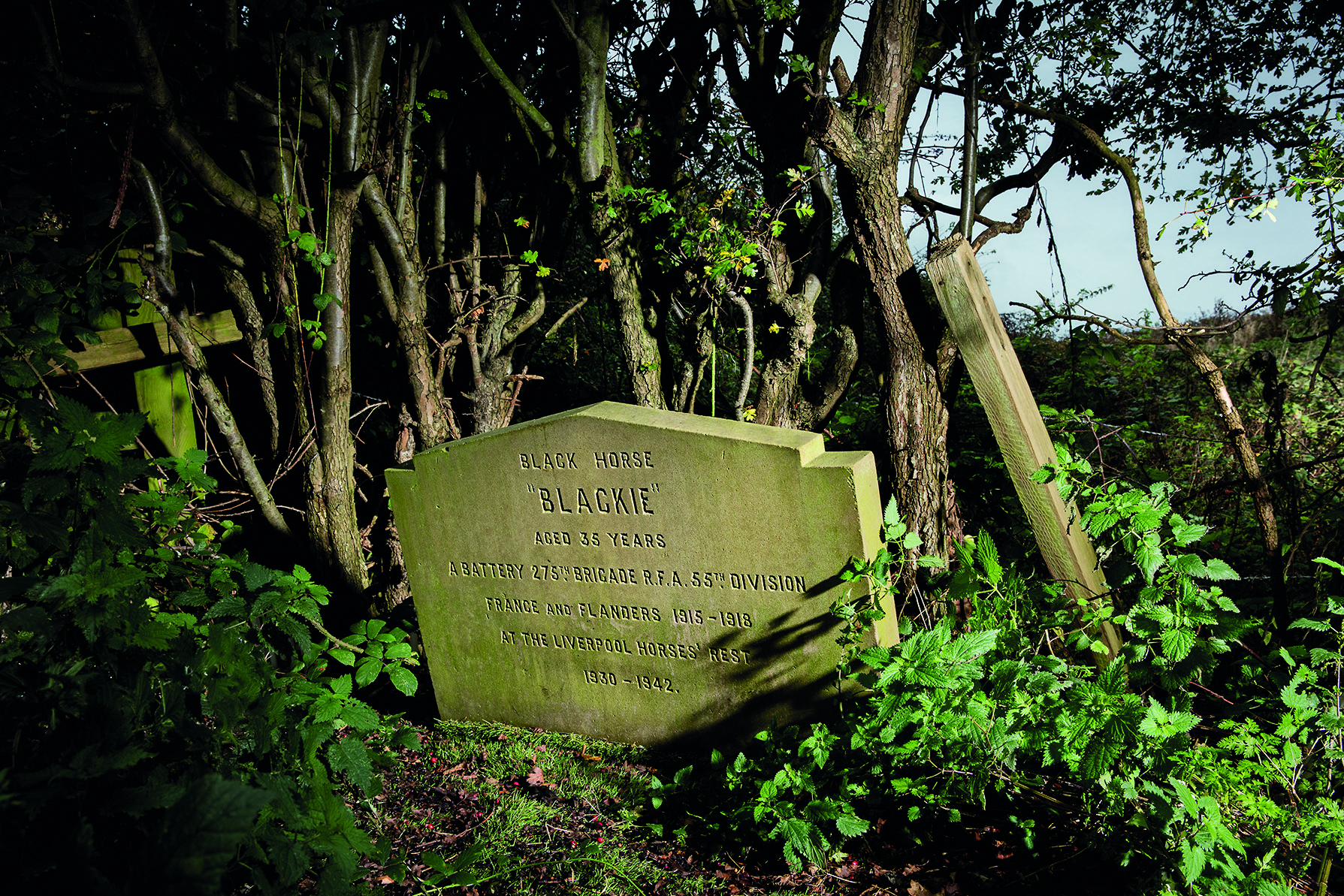The grave of an equine hero who fought in — and survived — some of the major battles of the First World War has been given official protection.
The memorial stone to “Blackie the war horse” has been granted heritage protection under Historic England.
It is the first war horse grave to be granted the protection and can be found at the RSPCA Liverpool Animal Centre in Halewood.
The grave has been given a grade II listing after a member of the public contacted Historic England with concerns that it was threatened by proposed building work.
“We advised them to apply for listing and are very happy it all worked out,” said a spokesman for Historic England.
Blackie served at the battles of Arras, Somme, Ypres and Cambrai, before returning to Britain, where he lived into his late 30s.
He served with the 275th Brigade Royal Field Artillery ‘A’ Battery 55th West Lancashire Division alongside his master, the wartime poet Leonard Comer Wall.
Details of Blackie’s early life are not known, but it is believed he was born in 1905.
“In Lieutenant Comer Wall’s will he requested that if he did not survive the war that his faithful horse Blackie be buried with his medals or decorations,” added a Historic England spokesman.
The lieutenant was killed in action at Ypres whilst riding Blackie on 9 June 1917, aged 20, and the horse’s groom, Francis Frank Wilkinson, was killed the previous day at the age of 23.
Blackie sustained severe shrapnel injuries in the attack that killed his rider, but continued his service on the Western Front until the end of the war.
Article continues below…
You might also be interested in:

Lest we forget: campaign honours the eight million horses killed in First World War
Brooke has launched Every Horse Remembered a century after the Great War

War Horse Joey sells for £35,000
The life-size horse puppet, used in the award-winning National Theatre production, was sold at a charity auction
“After the war Lieutenant Comer Wall’s mother Kate bought Blackie from the Army and lent him to the Territorial Riding School in Liverpool,” said the Historic England spokesman.
“In 1930 he was ‘pensioned off’ and retired to live at the Horses’ Rest home in Halewood where he remained until his death at the age of 37 in December 1942.
“It is understood that Blackie used to lead Liverpool’s May Day horse parade along with another ex war-horse known as Billy, and was adorned with his master’s medals.
“Blackie’s death received press coverage across Britain, from the local Liverpool Daily Post to the Gloucester Citizen, Portsmouth Evening News, and Dundee Evening Telegraph.”
Lieutenant Comer Wall’s wishes were honoured, and Blackie was buried with his medals in the north west corner of the western field next to Higher Road.
For all the latest news analysis, competition reports, interviews, features and much more, don’t miss Horse & Hound magazine, on sale every Thursday





